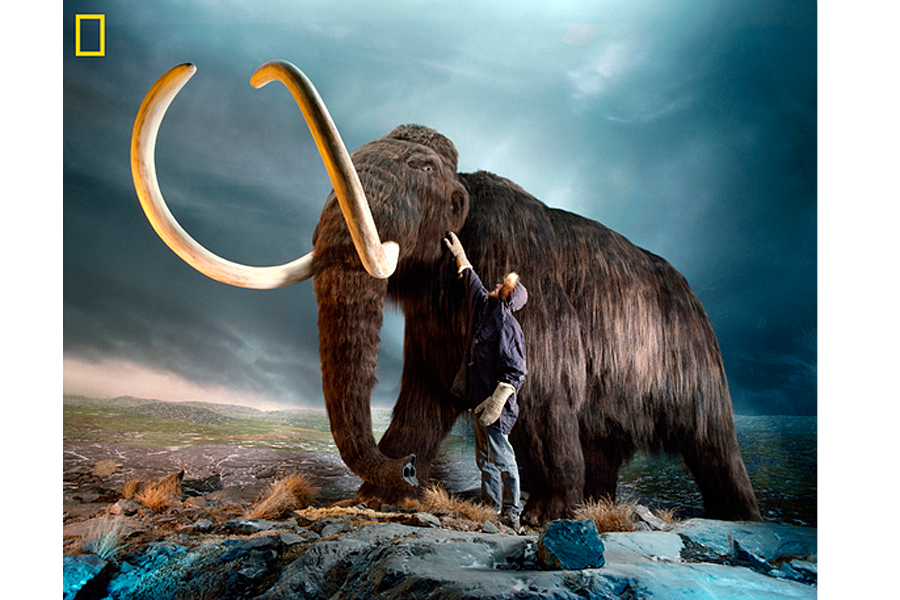Scientists edge closer to bringing back the woolly mammoth
Loading...
Scientists are one step closer to bringing a woolly mammoth back to life.
A new analysis of the woolly mammoth genome has revealed several adaptations that allowed the furry beasts to thrive in the subzero temperatures of the last ice age, including a metabolism that allowed them to pack on insulating fat, smaller ears that lost less heat and a reduced sensitivity to cold.
The findings could enable researchers to "resurrect" the ice-age icon — or at least a hybridized Asian elephant with a few of the physical traits of its woolly-haired cousin, said study co-author Vincent Lynch, an evolutionary biologist at the University of Chicago.
"It won't be that long till we're technically able to do it, but whether we should is a different question," Lynch told Live Science, referring to cloning a mammoth. "I don't think we should." [6 Extinct Animals That Could Be Brought Back to Life]
Cold-adapted creature
The mammoth DNA was extracted from the hair of two mammoths found in Siberia several years ago. One mammoth died about 20,000 years ago, and the other died 60,000 years ago. (The shaggy beasts flourished on the ice-age tundra, but most of them died after the glaciers melted, by about 10,000 years ago. A few holdouts survived on Wrangel Island off Siberia until about 3,700 years ago.)
Because mammoths and Asian elephants shared a common ancestor roughly 5 million years ago — a blip, in evolutionary time — the team was able to compare the genome of the ice-age beasts with their modern-day cousins, the Asian elephants. [How to Bring the Woolly Mammoth Back (Infographic)]
"They're really closely related," Lynch told Live Science.
They found that several unique mammoth genes helped the cold-loving creatures survive. These included genes for their shaggy, curly, heat-trapping fur, as well as for their small ears and short tails, which lose less heat than the big ears and tails that keep elephants cool.
The pudgy ice-age pachyderms also had genetic differences from the Asian elephant in the way they stored fat and processed insulin, the hormone that regulates how the body uses blood sugar for energy, according to the study, which was published today (July 2) in the journal Cell Reports. Because fat is insulating, the animals' chubby physiques helped them weather the Arctic tundra, which could routinely plunge to minus 58 degrees Fahrenheit (minus 50 degrees Celsius), according to the study.
Mammoths and elephants also had different temperature-sensing receptors in the body. In the mammoth, the receptors were essentially turned down, like a dimmer switch. That likely made the shaggy creatures less sensitive to both heat and cold, Lynch said.
Bringing mammoths back
The new findings bring the world closer to a cloned mammoth, but don't expect a genetically authentic version of the beast to come roaring back to life anytime soon.
Instead, researchers will first try to create a cold-resistant hybrid between an Asian elephant and a woolly mammoth, said George Church, a geneticist at Harvard University who is not involved in the current study.
Sequencing the genome is not the hardest part of the process; assembling a whole genome from scratch that actually functions like natural genetic material is more difficult, said Church, who is working on a project to bring the extinct creatures back to life.
Instead of trying to create a 100-percent authentic mammoth, Church's team is using a genetic cut-and-paste tool called CRISPR to splice a handful of mammoth genes into Asian elephant cells.
"We thought we'd just make the changes that are most likely to lead to an animal that looks, behaves and is adaptable to the cold like a mammoth," Church told Live Science.
Modifying Asian elephants with mammoth genes could help the modern-day subtropical creatures live in colder locales, "possibly extending the geographical range of an existing endangered species northward to areas at much lower risk of conflict with humans," Church said.
Follow Tia Ghose on Twitter and Google+. Follow Live Science @livescience, Facebook & Google+. Original article on Live Science.
- Image Gallery: 25 Amazing Ancient Beasts
- Skin and Bones: Inside Baby Mammoths
- Image Gallery: Stunning Mammoth Unearthed
Copyright 2015 LiveScience, a Purch company. All rights reserved. This material may not be published, broadcast, rewritten or redistributed.







